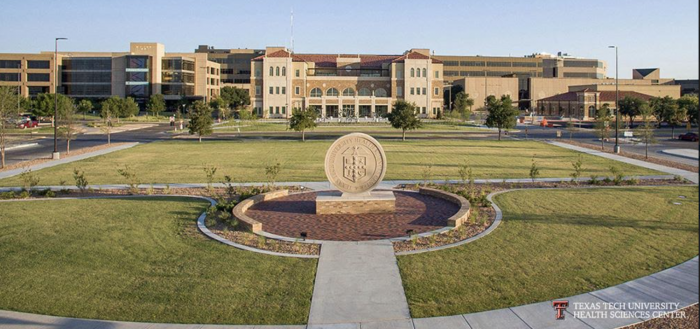
Etienne Deffarges has counseled, created, and invested in countless organizations during his professional life as a management consultant, business executive and entrepreneur. As a senior partner with Booz Allen Hamilton and global managing partner with Accenture, he advised businesses and governments all over the world, and orchestrated billion-dollar deals.
The U.S. government has provided a lot of financial relief to American households, small and large businesses, and hospitals to help mitigate the devastating economic and health impact of the Covid-19 pandemic. The CARES Act totals nearly $3 trillion in federal grants and forgivable, low-interest loans, an absolute historical record. And this is not the end of this relief effort: The Federal Reserve, ably led by Chairman Jerome Powell in these times of global crisis, has also committed several trillions of dollars in liquidity to essentially underwrite a lot of banking loans and corporate debt that might be in danger of default. Is this a problem? No, these are precisely the types of actions prior crises, from the Great Depression of the 1920-30s to the global 2008 financial crisis, taught us the Feds should undertake. Will this mountain of relief money present a long-term danger to our national finance health? No, as Nobel Prize of Economics laureate Paul Krugman wrote in his April 28, 2020 op-ed in the New York Times: “Government debt is money we owe to ourselves…We are providing disaster relief on a huge scale: unemployment insurance, aid to small businesses and more… How are we paying for it? The immediate answer is that the federal government is borrowing the money… But who will that money be owed to? The answer is, me — and people like me. “
Unlike the Feds and Uncle Sam, state and local governments cannot borrow trillions
While the U.S. federal government does not have to balance its budget—this last happened during the Bill Clinton presidency, over twenty years ago—most states do, by law: They have constitutional amendments requiring a balanced budget. States depend on income tax; sales tax; and property taxes for their revenue. Some do not levy income taxes, like Texas, Florida, and Washington. Forty-one states tax income, of which thirty-three use progressive income taxation, with tax bracket rates as high as 13.3% in California. These income taxes represent about 40% of aggregate state revenues. Sales taxes represent almost half of aggregate state revenues, with the highest rates found in Puerto Rico and California—five states, such as Delaware, New Hampshire, and Oregon, do not levy any sales tax.
With the Covid-19 and the ensuing lockdowns, many small and large business closing, and thirty million Americans having filed for unemployment, the states’ income streams have taken a double hit: Very little revenue from sales taxes and lower-income tax revenue as well—people who are no longer working pay no income tax and tend to be parsimonious with their spending. With business profits plummeting, capital gain taxes will be hit hard as well, and so will gas taxes, people driving a lot less. Most state budgets will, therefore, start showing yawning deficits.
What about CARES? It did contain some elements of funding for states and cities, focusing among other things on public hospitals, but the total amount was only about $200 billion, a small percentage of the overall effort, and clearly not enough to address the looming financial crisis for states and municipalities. This is why the National Governors’ Association, chaired by the Republican governor of Maryland, Larry Hogan, recently requested $500 billion to Congress to help states stabilize their budgets and replenish their trust funds for unemployment insurance, badly stretched by the unprecedented number of jobless claims during this crisis. Initially, Senate Majority Leader Mitch McConnell took a very negative, and partisan, view of this request, saying that “Republicans are not interested in ‘revenue replacement for state governments’ or ‘solving their pension problems’” He also made this inflammatory comment on a radio interview: “I would certainly be in favor of allowing states to use the bankruptcy route.”
But Senator McConnell may have to operate a strategic retreat on this front, since his initial stand was almost universally condemned, including by several Republican senators openly urging funding for states and large cities. For example, Bill Cassidy (R-LA) has co-authored a bipartisan bill to create a $500 billion stabilization fund. Democrats in the House are also emphasizing aid to struggling state governments—think of the gargantuan set of challenges faced by New York governor Andrew Cuomo—so that states do not have to balance their books by slashing funds for public services at their time of greatest need. Yes, this is why McConnell’s initial stand was so unpopular, but what are we talking about in terms of budget cuts? Essential services, like the police; fire and emergency departments; public schools and their teachers; public hospitals; public hospitals; transportation; and many other public works. Who wants to cut these to the bone? No one. I did not even mention the dire straits faced by the state pension funds: Their financial strength has deteriorated to its weakest position in the last thirty years as a consequence of the financial market losses suffered during the Covid-19 crisis. The huge increase in unemployment in the U.S. not only cuts state tax revenues but also increases required spending for the states on unemployment benefits, and this looming pension funding deficit may take years to correct. What can states and large cities do to address their financial crisis, principally if the federal relief money targeted to them is slow to materialize, due to partisan infighting in Washington DC?
States and large cities: Who may be more exposed financially due to the Covid-19 pandemic?
State and large cities being in dire financial straits is nothing new in our history: New York narrowly escaping bankruptcy in the 1970s; the 1994 Orange County bankruptcy in Southern California; California, the world’s fifth-largest economy, compared to Greece in 2008; the 2017 Kansas $900 million budget gap created by the tax cuts favored by then governor Sam Brownback; and the current Illinois financial crisis, years into making—the state’s credit rating is just one notch away from being rated junk.
Our fifty states are an extremely diverse bunch, and this is reflected in their financial situation. At one end is rich California, with its forty million people, its $3.1 trillion economy, $79,000 per capita income, and a relatively “good” Covid-19 crisis. Thanks to early and energy action by Democratic governor Gavin Newsom, as well as Los Angeles and San Francisco mayors Eric Garcetti and London Breed, the state went into lockdown relatively soon—three days before New York, which was much more affected. As a result, the state has suffered about 2,500 deaths as of May 6, 2020, or 6 fatalities per 100,000 inhabitants. This ratio of 6 is much lower than the horrific Covid-19 casualty rates for 100,000 people in New York (126); New Jersey (93); Connecticut (73); Massachusetts (61); Louisiana (47); Michigan (43); Georgia (33); Pennsylvania (26); Illinois (23); and Maryland (23). This means that California hospitals were never in danger of being overwhelmed, with a lack of ICU beds, etc., unlike what New York and neighboring Northeastern states faced. California may have to curtail some of its newest social programs, like providing greater access to child care for workers or offer free higher education in Los Angeles to reduce inequality. This crisis has even coaxed the Golden State to make progress on its perennial homelessness problem, with new shelters found for over 30% of the San Francisco homeless population, and project Roomkey in Los Angeles opening thousands of motel rooms for older homeless people. If there is a budget shortfall, and no federal government help, California and its thriving large cities will be able to issue billions of dollars of bonds, with likely a good financial rating.


Public health officials throughout the country can also learn and apply valuable lessons from countries like Italy.
What about New York state? It is the epicenter of the Covid-19 pandemic in our country, with a tragic 25,000 deaths thus far. However, Governor Andrew Cuomo has become a national statesman for his steady and competent leadership, first responders have behaved heroically and selflessly, and everyone has honored the Yankee fighting spirit. After a very tough six weeks, deaths; ICU and hospital admissions; and the number of cases are all declining. Its hospitals and public health system are no longer overwhelmed. And New York is rich, very rich: It has the highest income per capita of all fifty states, at $86,000 per year. So just like California, push comes to shove, it can also issue bonds in large enough quantities to fend off any financial issue—and smart financiers willing to help are not in short supply in Manhattan!
So who is really struggling? The states that will have the toughest budget challenges are likely those where local finances were challenging even before the virus hit, and where there was a relatively high number of Covid-19 infections and related fatalities. Among the ten large states (by population) mentioned above for their high rate of Coronavirus deaths, three have also been frequently mentioned as “bottom five” or “bottom ten” in studies ranking our fifty states for financial health. These three states are Connecticut, Illinois and New Jersey. Significant budget and pension funding issues, ongoing for years, have created endless crises. New Jersey has already raised taxes, with a new 11.5% top income tax bracket; sales taxes have increased in Connecticut; and Illinois governor J.B. Pritzker has proposed a measure replacing its flat 4.95% income tax with a progressive income tax peaking at 7.99%, to be approved by local voters in November of 2020. Will this be enough to avoid severe budget cuts for the police, fire department, public school teachers and universities? And what are the implications for public health in these states—as well as in the rest of the country?
Impact on public health of the Coronavirus crisis
Public health in Connecticut, New Jersey, and Illinois is currently very stretched, but coping. Both Connecticut governor Ned Lamont and New Jersey’s Phil Murphy have been frequent guests on national TV news shows to argue forcefully for federal government aid to the states. Along with New York’s Andrew Cuomo, they advocate (not illogically) that this aid should go in priority to the states worst affected in terms of Covid-19 cases and fatalities. Illinois’s financial situation has not improved lately: Today, May 6, Illinois had to delay its planned $1.2 billion debt sale due to the threat of much of it being graded below “investment” grade, with severe consequences on the level of interest to be paid, potentially as high as 4%—unheard of for such a large state. However, Illinois hospitals, including its public health system, are strained but still coping. The biggest local burden is on the public Cook County Health set of hospitals, many of them safety-net providers serving large minority populations on the Chicago Southside. Occasionally, like in New York, some public hospital emergency rooms (ERs) have had to close for a few days, not to be overwhelmed by the inflow of patients. Illinois hospitals have suffered from lack of protective equipment (PPE) for their physicians and nurses, but this is now improving, mirroring the situation in most large U.S. cities. Testing is also improving, again like in most of the country, but is still below what physicians say the optimum level should be (2 to 3 million tests per day at the U.S. level). Our most challenged states are coping, but when will the bill to be paid by the states come due?
But wait: CARES did not include much direct money for the states, but it did include a lot of direct money for hospitals, right? Yes, the $2 trillion initial CARES Act included $180 billion for the Public Health and Social Services Emergency fund, including $100 billion for hospitals alone—averaging over $100,000 per hospital bed in the U.S. Hospitals did have to apply for those funds, though, and they could only be used for Covid-19 specific spending, such as the constructions of “field hospitals” (read, tents) and much needed medical supplies (remember that in the absence of federal coordination, states often had to bid against each other for these and pay top dollar in “competitive” auctions). And that was just the start: Democrats negotiated hard on the second CARES installment (what a word for half a trillion dollars!), and that one included another $50 billion for hospitals; hard-hit areas; rural providers; and the Indian Health Service. However, the $20 billion to hospital providers were based on 2018 patient revenue, not a very favorable metric for public and safety-net hospitals, which have a lower revenue base per patient than rich and state-of-the-art academic medical centers and private hospitals. So these CARES funds, although necessary, are unlikely to be sufficient.
While waiting for more federal relief and / or bond issues, states have taken a number of innovative steps to protect their public health systems. For example, after conferring with hospital leaders, New York’s Cuomo has essentially merged all hospitals in the state into one system to fight the Coronavirus. This single, giant operating system has different locations and provider units, but throughout the Empire State hospitals are sharing staff, patients, and supplies, with the governor’s office overseeing the distribution of resources. This is all allowed by New York law in cases of emergencies, but the scale of this effort is new: Over 200 hospitals and 53,000 beds, which Cuomo wants to bring to 100,000. If there is a second Covid-19 wave this fall, New York will be prepared.
Public health officials throughout the country can also learn and apply valuable lessons from countries like Italy that experienced the crisis a few weeks before we did. In Italy, the region of Veneto (capital Venice) realized early on that many low-risk patients with flu-like symptoms should be given medicine, instructions to hydrate frequently, and…sent home, as opposed to be admitted to a hospital ER, where the risk of catching Covid-19 is much higher. In contrast, neighboring Lombardy, centered around Milan, admitted most patients into very large centralized hospital ERs, with devastating consequences of cascading virus infections, and death rates four times as high as those in Veneto. It is easy to imagine how the Veneto policies can be emulated by our public hospitals, for example by using the CARES money to set-up large tents to keep non-critically ill patients out of the ER. This will save lives, as shown in Veneto, but also free-up much-in-demand ER physicians and ICU beds for the most critical cases. States should also manage the production of PPE for healthcare staff and coordinate the use of ICU beds across their public health systems, even if not going full consolidation like in New York.
That lives us with the elephant in the room: This crisis has unfortunately exposed the fragmentation and tenuous nature of our healthcare system, in which 30 million are uninsured, with another 30 million underinsured. That is without counting the significant proportion of the newly unemployed, 30 million today, and likely at least 10 million even when our economy has restarted, who will lose their work-related health insurance. Think about many airlines; aircraft manufacturing; energy; restaurants; hotels; leisure; and travel industry jobs that are not coming back…
With tens of millions of Americans uninsured and unable financially to see a physician, a second wave of Coronavirus could be devastating: How many Americans will try to cope without medical help if they become ill with the virus? And how many others will they contaminate? We don’t even know if a potential Covid-19 vaccine will be affordable to all.
Time for Universal Health Care (UHC) in America, by whatever means possible: Extension of Medicaid to all uninsured following the ACA’s provision for such extensions; Expansion of Medicare to all older than 26 years of age; Medicaid for All, or Medicare for All, state by state. We.Need.UHC.Now.

CAREER ADVICE

GOV TALK




